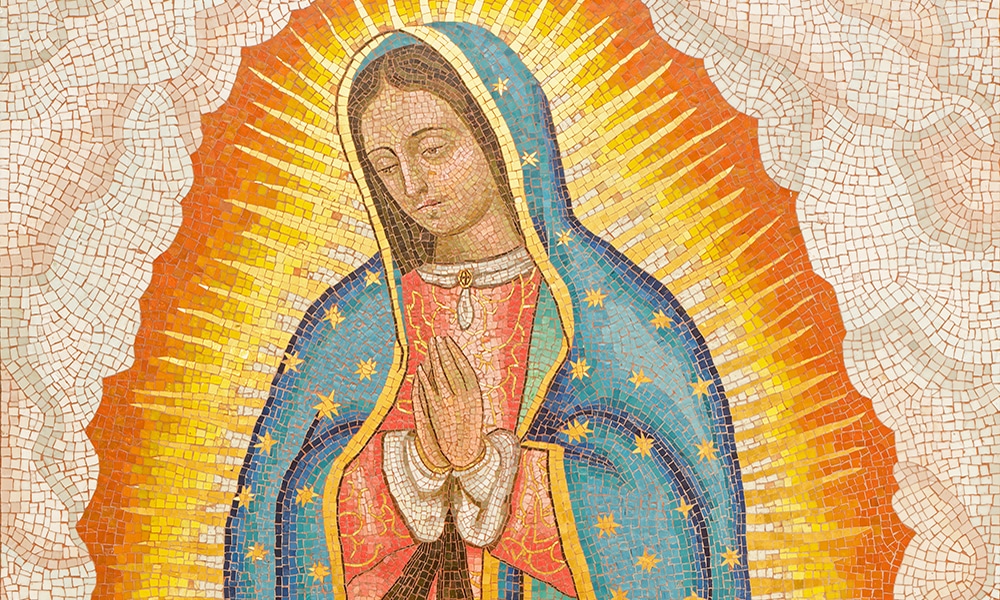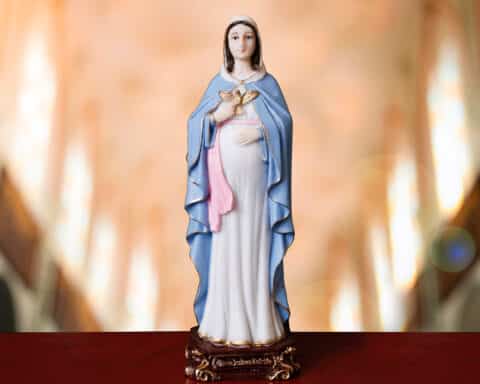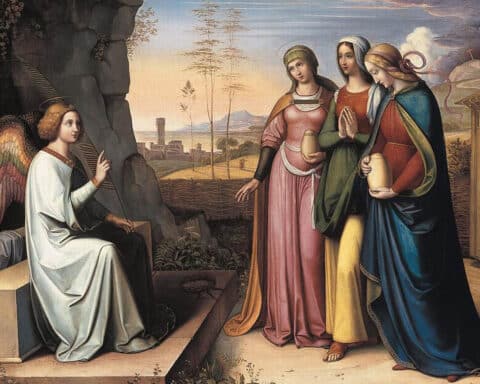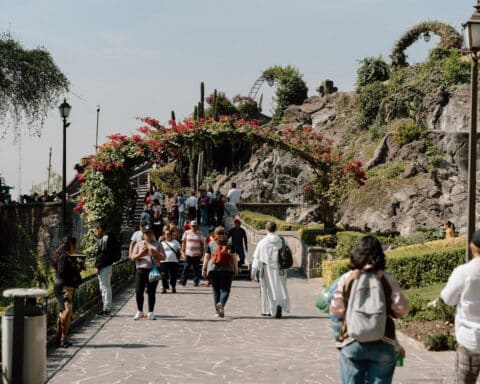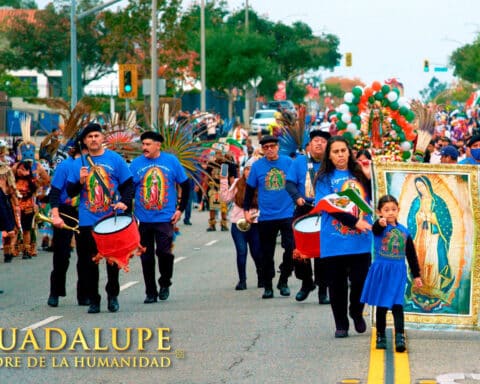The feast of Our Lady of Guadalupe on Dec. 12 is a Mexican tradition that has extended throughout the Americas. In the United States, it has also been adopted by many people from Central and South America, among others.
This popular feast day is celebrated in many parishes throughout the United States with Masses, by reenacting the apparitions; by praying a “Rosario de la Aurora,” a Rosary at daybreak; and with the traditional “Mañanitas,” where those present are led by a mariachi band in singing songs of praise.
This celebration is one of the ways in which Hispanic mothers pass on the tradition and devotion to their children, and it is important to lovingly embrace the mission that we have as the first evangelizers of our homes, by finding ways to bring our children closer to the Faith in our everyday lives.
La Morenita del Tepeyac, or the “Dark Virgin” of Tepeyac, as she is also known because of her mestizo (Spanish and Native American) facial resemblance to the indigenous people of the New World. It is one of the signs of her embracing, motherly love.
The Virgin Mary, under the title of Our Lady of Guadalupe, is also considered the patroness of the unborn, since she carried Jesus not in her arms but in her womb. The black ribbon shown around her waist was a symbol that she was with child.
When I first learned more about her and her feast day as an immigrant teenager, her words to St. Juan Diego during her four apparitions in the year 1531 resonated in my heart, which was full of doubts about my present and future.
“Am I not here, I, who am your mother? Are you not under my shadow and protection? Am I not the source of your joy? Are you not in the hollow of my mantle, in the crossing of my arms? Do you need something more?” (Nican Mopohua, 119).
Those maternal words, related in the story of Our Lady of Guadalupe written in the Nahuatl language, have carried me through many hard times, particularly as an expectant mother, entrusting my babies in the womb to her care.
Pope Francis, in his 2017 homily celebrating her feast day, reminded us that St. Juan Diego was a peasant who felt inadequate and unworthy of the mission she entrusted him. She embraced him anyway, and we can imitate that love by reaching out to those on the peripheries: “[F]rom her we wish to learn to be [a] Church with a face of mixed race, indigenous and Afro-American, the face of a farmer, the aspect of a tail, wing, cacaxtli. The face of the poor, the unemployed, boy and girl, young and old, so that no one feel[s] barren or unproductive, that no one feel[s] shame or feel[s] inadequate.”
And Los Angeles Archbishop José H. Gomez recently reminded V National Encuentro ministry leaders that the mission entrusted to Juan Diego as an evangelizer still resonates in our times and can be embraced by all.
“You are the children of Our Lady of Guadalupe in our present times; you are the spiritual heirs of Juan Diego. The mission that was entrusted to him, is now entrusted to you,” he said.
During these Advent and Christmas seasons, let’s embrace that call once again in our homes and our communities, by immersing ourselves in the love that Mary offers us. Let’s not forget to share the love of Christ with others, as the spiritual heirs of the mission of St. Juan Diego, by reaching out to the poor, the marginalized, by feeding the hungry, clothing the naked, welcoming the immigrant, sheltering those in need. And by involving our children as we can, they too can discover in their hearts the beautiful fruits of our Lady of Guadalupe’s divine love.
Norma Montenegro Flynn writes from Maryland.

